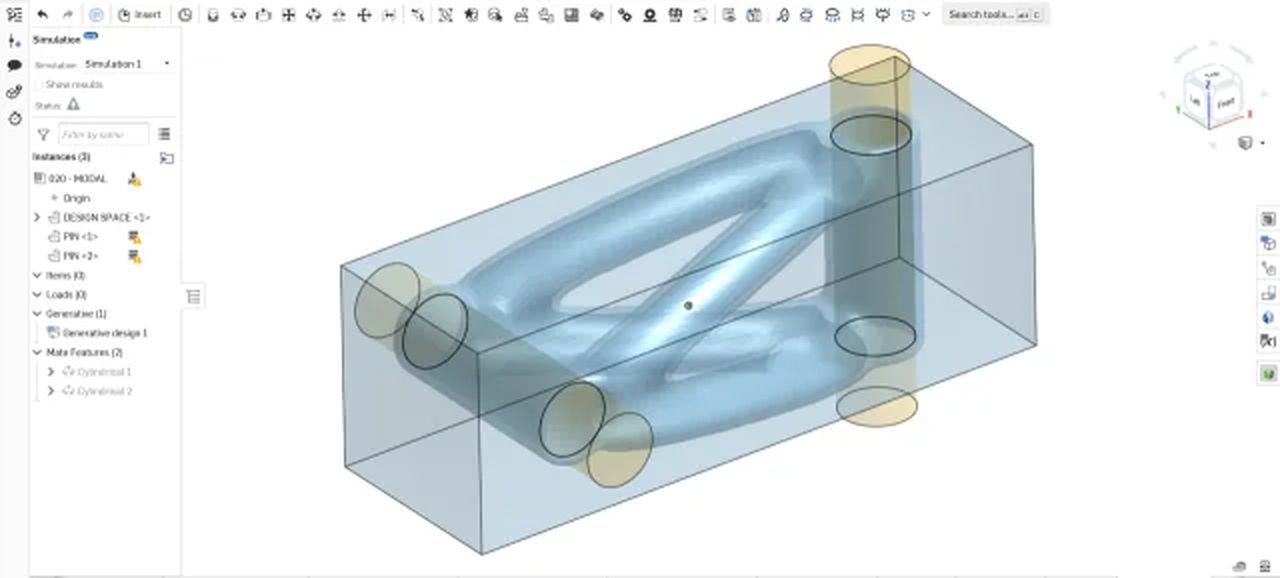
Spotlight finds generative design at PTC’s LiveWorx.
All this talk about AI and generative models (like ChatGPT) has served to rekindle interest in generative design—but only because people are confusing the two. Generative design has done little to warrant the latest attention. It has had no big breakthroughs either in capability or in acceptance.
If left to its own devices, generative design still produces parts that are not optimized and are almost always unmanufacturable. Generative design seemed to have gone quiet, an overhyped technology, a solution for free-spirited, original and superior designs that found acceptance for only one niche purpose (lightweighting).
But the attention being lavished on ChatGPT has trickled over to generative design and the CAD industry seems to be enjoying its accidental spotlight. Even though the technologies (large language models like ChatGPT) and bone growth algorithms (still the root of generative design programs) are completely different, CAD vendors are strutting their early, ahead of the curve adoption of AI—_as if_it was.
However, PTC’s pragmatic CEO, Jim Heppelmann, attempts to bring a dose of realism to wild expectations of AI. PTC has been employing AI in several forms. While he includes generative design as AI, he suggests how we can realistically expect to see AI implemented in the near future—and warns of premature and unchecked use.
PTC has had AI-assisted chatbots in ServiceMax that respond to natural language questions from service technicians in the field, for example, and Heppelmann promises more of it. Same for Codebeamer, PTC’s application lifecycle management (ALM) platform.
This is, no doubt, a response to ChatGPT’s much touted ability to create code, which it does impressively, although not perfectly.
Be careful, Heppelmann warns. Where is ChatGPT code coming from? Does it have malware? Is it copyrighted?
PTC plans to use AI in the user interface. With ease of use continuing to be CAD’s unspoken problem (it takes longer to learn CAD than almost any other type of program), AI could conceivably blow away menu picking and mouse clicks and keyboard entry with natural language prompts and input. But I tend to be too easily excited. Heppelmann mentions that the first iteration of AI may be in the way commands arrange themselves or are presented to the user.
“We don’t want to serve up wrong answers,” says Jim Heppelmann at the Q&A of his cautious approach, mindful of large language models’ eagerness to please and its ability to answer every question eloquently but often inaccurately.
And expecting AI to generate a design as simply as ChatGPT generates answers in English is quite unrealistic. One deals with 3D and the other in language, he says, and falls back to generative design as simply the best there is for that purpose at the moment.
The Frustum Solution
I reacquaint myself with Linda Lokay at LiveWorx to find out the state of the art in generative design.
Lokay took a passion for math (“I love differential equations”) into programming for 3D geometry, was COO of Frustum, and arguably one the two best generative design programs in existence. PTC acquired Frustum in 2018 for $70 million and took it under the hood of Creo, the company’s CAD flagship.
Frustum technology will find its way into Onshape as well—news that broke at LiveWorx.
Users will never know they are using Frustum—PTC’s generative design fires up without giving Frustum any credit. Lokay is okay with that.
